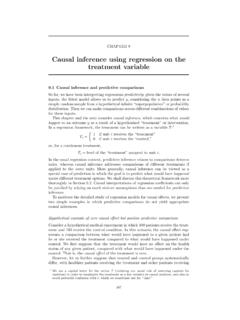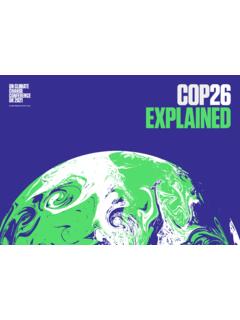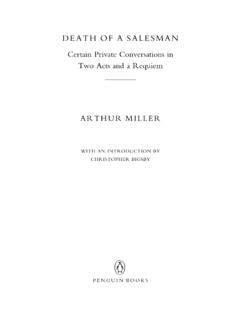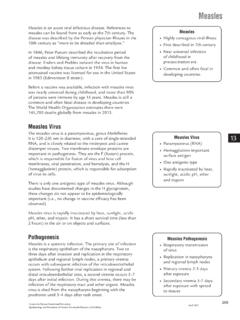Transcription of COP26: ARTICLE 6 RULEBOOK FOR THE NEW GLOBAL …
1 COP26: ARTICLE 6 RULEBOOK FOR THE NEW GLOBAL CARBON MARKET MECHANISM AGREEDNOVEMBER 20212 CLIFFORD CHANCECOP26: ARTICLE 6 RULEBOOK FOR THE NEW GLOBAL CARBON MARKET MECHANISM AGREEDCOP26: ARTICLE 6 RULEBOOK FOR THE NEW GLOBAL CARBON MARKET MECHANISM AGREEDSome 6 years after the Paris Agreement, COP26 has resulted in agreement on a GLOBAL carbon market mechanism (GCMM) largely completing the so-called Paris Agreement ARTICLE 6 RULEBOOK .Key decisions (the Rules) have been made on the eligibility of projects and activities to be included in the GCMM, the approval process and issuance of credits, the making of corresponding adjustments to host state s emission accounts, and how to deal with legacy projects and credits under the Kyoto Protocol s Clean Development Mechanism (CDM).
2 We discuss the key elements below along with the likely impacts on the compliance markets and voluntary carbon markets. Requirements for eligible projects / activities to be included in the GCMMHost states will approve and authorise the types of carbon emissions reduction or removal activities and projects (Projects) to be included in the GCMM, and identify how these will help the host state to achieve its Nationally Determined Contribution ( NDC ) under the Paris Agreement. Host states will also have to approve whether resulting credits from the GCMM (known as ARTICLE emission reductions or ) can be used for the purposes of satisfying its own NDC or for international transfer. The Rules explicitly recognise the ability for private entities to participate in Projects (as activity participants) and to receive resulting will have to comply with a methodology agreed by a new international Supervisory Body.
3 They will also have to satisfy a number of key criteria to be eligible for the GCMM: The mitigation of GHG emissions must be additional , taking into account national policies and legislation, the Project wouldn t have happened on a business as usual basis without funding from the GCMM, and are not required by law or regulation; they should also be ambitious, and not lock in levels of emissions, technologies or carbon-intensive practices. Projects must deliver real, measurable and long-term benefits over multiple NDC implementation periods, including remedying any reversals and leakage and minimising adverse environmental and social impacts. Ambitious benchmarks must be used to establish a baseline for the activity (against which reductions will be measured) set at the average actual or historical emission level of best performing comparable activities in similar circumstances, using best available techniques.
4 Projects must have a crediting period of a maximum of 5 years, renewable twice ( up to 15 years), or a single unrenewable period of 10 years. Crediting periods cannot start before 2021. Projects must ensure accurate monitoring and calculation of emission reductions. Projects must be subject to suitable stakeholder consultation. Projects will have to be validated by accredited independent national designated operational entities to verify that the Projects comply with the requirements. These entities will also monitor the implementation of Projects to ensure emissions reductions are achieved, and make an application for certification and issuance of to the Supervisory Body. The Supervisory 23 CLIFFORD CHANCECOP26: ARTICLE 6 RULEBOOK FOR THE NEW GLOBAL CARBON MARKET MECHANISM AGREEDBody will then issue into a mechanism registry in which activity participants will have holding accounts.
5 Use of credits and corresponding adjustmentsA key sticking point of the ARTICLE 6 discussions was the proportion of credits that would need to be given over to support developing countries adaptation efforts. Ultimately it was decided that the proceeds from 5% of all , in addition to a monetary payment (of a level to be set by the Supervisory Body based on the scale of the Project, will need to be given to the Adaptation Fund for these purposes. A further minimum of 2% of all must be cancelled as a contribution towards GLOBAL emissions reductions. Finally, a payment must also be made to cover administrative expenses of the GCMM. Remaining can be internationally transferred and used for trading purposes. Once are issued, a host state may use them towards its NDC.)
6 Where, alternatively, the state has decided to permit the to be transferred internationally, it will need to make corresponding adjustments to its emissions accounting (both for emissions within its NDC and outside it) to reflect that state s notionally increased emissions inventory; this is to ensure no double counting of emissions reductions between states, a key point of contention in the negotiations. Similar corresponding adjustments will need to be made in respect of shares of devoted to adaptation purposes and administrative CDM projects / creditsA key controversy hanging over the Paris Agreement was the extent to which legacy credits (CERs) under the CDM could be used going forward to achieve host states NDC s. The ultimate compromise reached in the Rules is that CERs can be used towards satisfying NDCs, subject to compliance with a number of conditions, including: Only CDM activities registered on orafter 1 January 2013 would be eligible; The CERs can only be used for thefirst NDC only ( a maximum of5 years); and Temporary and long-term CERs couldnot be Rules also provide that, contrary to the position with Art , no corresponding adjustments would be required to be made to NDCs by the host Party for sale of CERs, nor would a share of the proceeds of CERs have to be provided for developing country adaptation.
7 It was also agreed that ongoing CDM projects can transition into the GCMM provided they comply with GCMM rules (and methodologies following a phase in period), apply for approval from the host CDM state by 31 December 2023 and receive the approval of the host CDM state by 31 December 2025. Co-operative approaches The Rules also set out a separate mechanism for co-operative approaches which may be agreed between individual states to help one another to achieve their NDCs (under ARTICLE of the Paris Agreement). This framework is separate from the GCMM but will similarly allow for the creation of credits (called Internationally Transferred Mitigation Outcomes , or ITMOs ) from projects or activities which can be traded between states. It is possible that private entities will be able to get involved in projects and activities linked to ITMOs, or trade in ITMOs, although the framework for inclusion of private entities is not set out in the Rules and would be dependent on the national laws and regulations of the relevant countries.
8 It is thought that some host states may prefer to make individual co-operative approach arrangements with other states rather than allowing the creation of This would be to enable the host states to exercise greater control over the extent to which emissions reductions can be sold internationally (see further below in relation to voluntary markets).34 CLIFFORD CHANCECOP26: ARTICLE 6 RULEBOOK FOR THE NEW GLOBAL CARBON MARKET MECHANISM AGREEDA nother key difference between co-operative approaches and the GCMM is that co-operative approaches can allow activities which do not result directly in emissions reductions to be counted towards issuance of ITMOs. This might include, for example, renewable energy projects and adaptation programmes. ITMOs of this nature will be issued based on converting non-GHG metrics to GHG metrics to allow them to be used towards achievement of NDCs.
9 Impact on the compliance marketsIn the past, under the Kyoto Protocol mechanisms of Joint Implementation and CDM, compliance markets such as the EU emissions trading system ( EU ETS ) were linked with international credits such as CERs. However, from the beginning of the fourth trading period of the EU ETS in January 2021, the EU removed the ability to use CDM credits for satisfying EU ETS obligations due to a potential lack of transparency in the operation of the CDM mechanisms. Against this background, the Rules have the potential to overcome issues such as a lack of transparency and create a possibility for compliance systems like the EU ETS (and the new UK ETS) to be linked with international credits again. Governing bodies of emissions trading systems such as the EU ETS and the new UK ETS will now be considering the detail of the Rules to assess whether and to what extent to allow to be used for compliance purposes under those ETSs without affecting the credibility of their NDCs or those trading systems.
10 Their decisions on whether to restrict the ability for to be used for compliance purposes will impact the behaviour of host states and the voluntary on the voluntary carbon marketsVoluntary carbon markets are currently highly fragmented and face difficulties with the quality of certain carbon credits, with respect to issues such as double counting. Many market participants are currently hesitant to invest in voluntary carbon markets as a result. Such issues are currently being addressed by the Taskforce on Scaling Voluntary Carbon Markets (TSVCM) and we are supporting these efforts. Although there is no clear guidance on the functioning of voluntary carbon markets in light of the Rules, it can be expected that, at the very least, the Rules have a potential to increase the integrity of voluntary carbon markets.















